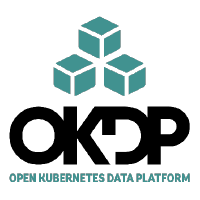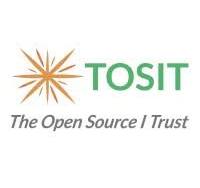Open Kubernetes Data Platform by TOSIT
Publié le 2 October 2025
TOSIT’s OKDP: The Open Source Platform to Modernize Data Management
# What is OKDP?
OKDP stands for Open Kubernetes Data Platform. It is an open source, cloud-native platform designed around Kubernetes, intended for data management, processing, analysis, and exposure. Supported by the TOSIT Association (The Open Source I Trust), OKDP aims to provide a modern, modular, and community-driven alternative to proprietary solutions like Snowflake, Databricks, or Cloudera.
This solution is primarily aimed at data scientists, data engineers, and more broadly, organizations looking to leverage their data while maintaining control over their infrastructure and costs.

# Origin and Objectives
OKDP was born from the initiative of the Direction Générale des Finances Publiques (DGFiP), in collaboration with other public and private actors (BPCE, Société Générale, Orange, etc.), all members of TOSIT, to offer an open source, secure, and highly available solution tailored to cloud-native architectures and the needs of the Modern Data Stack.
Unlike TDP (Trunk Data Platform), another solution also supported by TOSIT that relies on a centralized Hadoop-based architecture, OKDP is designed for decentralized architectures (Data Mesh, Data Fabric, Lakehouse) and advanced use cases such as machine learning, MLOps, or interactive analysis.
The goal is to bring together under one banner open source tools and frameworks (Apache Spark, Trino, Superset, MLFlow, Kubeflow, Apache Iceberg, Polaris Catalog, etc.) to enable users to build a custom platform tailored to their specific needs, while benefiting from an active community and a transparent roadmap.
Key Features
The key features of OKDP are as follows:
– Modularity: Each component (Spark, Trino, JupyterHub, etc.) can be deployed independently, allowing for fine-grained customization of the platform.
– Cloud Native: OKDP is designed to integrate with any Kubernetes infrastructure (vanilla, Rancher, AKS, EKS, GKE, etc.), offering great deployment flexibility.
– Interoperability: The platform supports open table formats like Apache Iceberg and metastores like Apache Hive or Polaris Catalog, facilitating integration with existing tools.
– Automation: GitHub Actions pipelines and declarative methods (Flux CD) are provided to automate deployments and updates.
– Security and High Availability: OKDP is built for production, with authentication mechanisms (OIDC), observability (Prometheus, Grafana), and multitenancy.
Target Audience and Use Cases
OKDP primarily targets data scientists and data engineers, but also aims to expand its audience to data analysts and business users.
Use cases include:
– Large-scale data collection, storage, and processing.
– Advanced analysis and visualization (via Superset, JupyterLab).
– Machine learning and MLOps (integration with Kubeflow, MLFlow).
– Data exposure through REST APIs or user interfaces.
Roadmap and Evolutions
In 2025, priorities include:
– Integration of Apache Iceberg and Polaris Catalog.
– Addition of Kubeflow and MLFlow for MLOps.
– Development of a unified REST API and front-end.
– Provision of a sandbox to facilitate adoption.
Why Choose OKDP?
Several arguments support the use of OKDP:
– Control and Autonomy: No dependency on proprietary vendors, freedom to choose components and evolution pace.
– Controlled Costs: No licensing fees, reduced infrastructure and support costs.
– Active Community: Supported by public and private actors, with contributions open to all.
A Few Words About TOSIT

TOSIT, an acronym for "The Open Source I Trust" (in French: "L’Open Source en qui j’ai confiance"), is a French association founded in 2017 with the main objective of promoting the adoption of open source solutions within large organizations, whether public or private. Its members include administrations and companies seeking to modernize their infrastructures while maintaining control over their data, among them major names such as DGFiP (Direction Générale des Finances Publiques), Orange, EDF, SNCF, BPCE, and Société Générale.
To learn more and join: - TOSIT Association Website - https://tosit.fr
Sources and References
For further reading and the sources used to write this article:
Official OKDP Website - https://okdp.io/
OKDP Presentation by BlueHats - https://code.gouv.fr/fr/bluehats/okdp/
OKDP Updates – BlueHats 2025 - https://code.gouv.fr/fr/bluehats/okdp-2025/
LeMagIT: OKDP, TOSIT bridges Hadoop and the Modern Data Stack